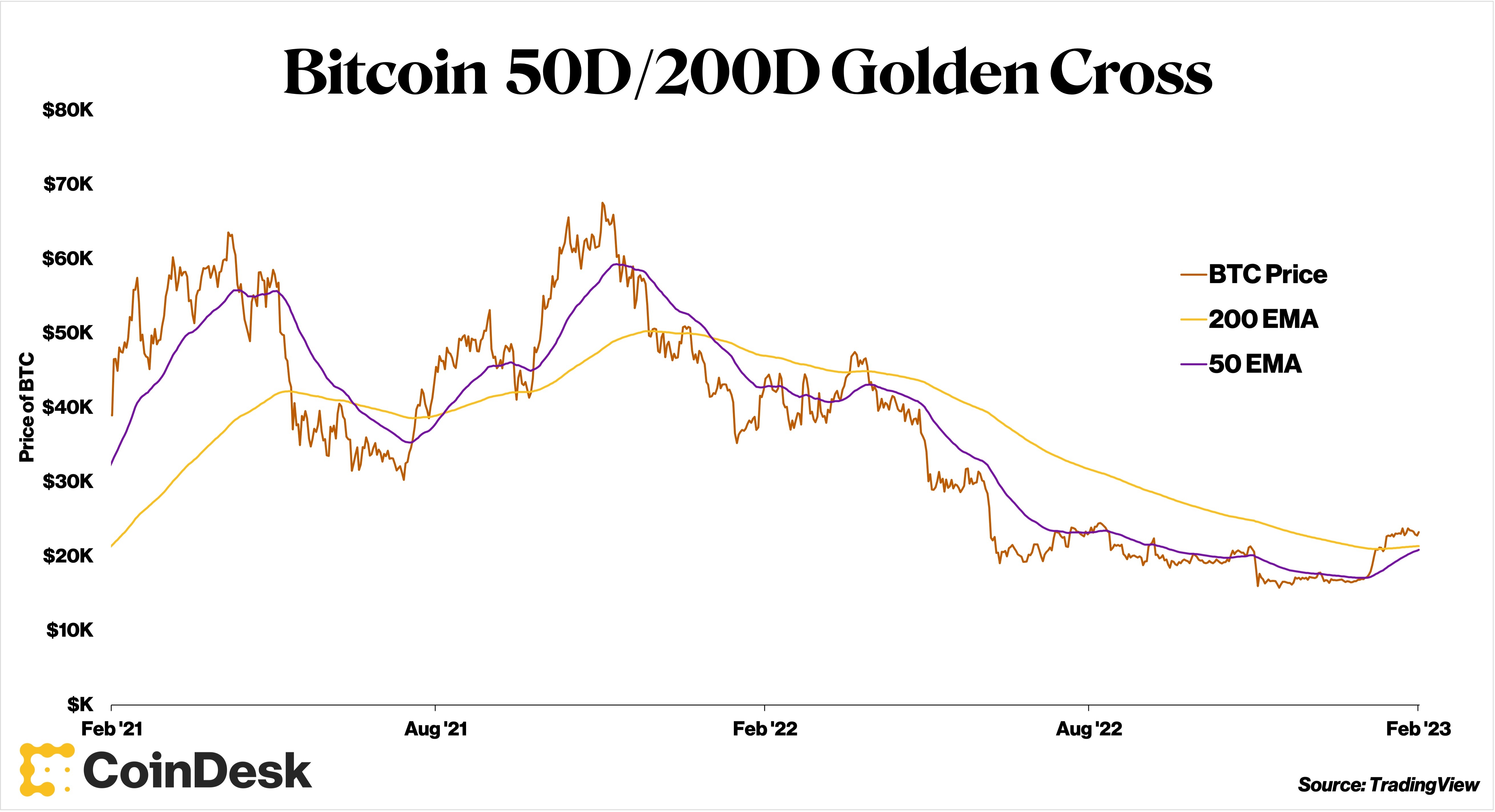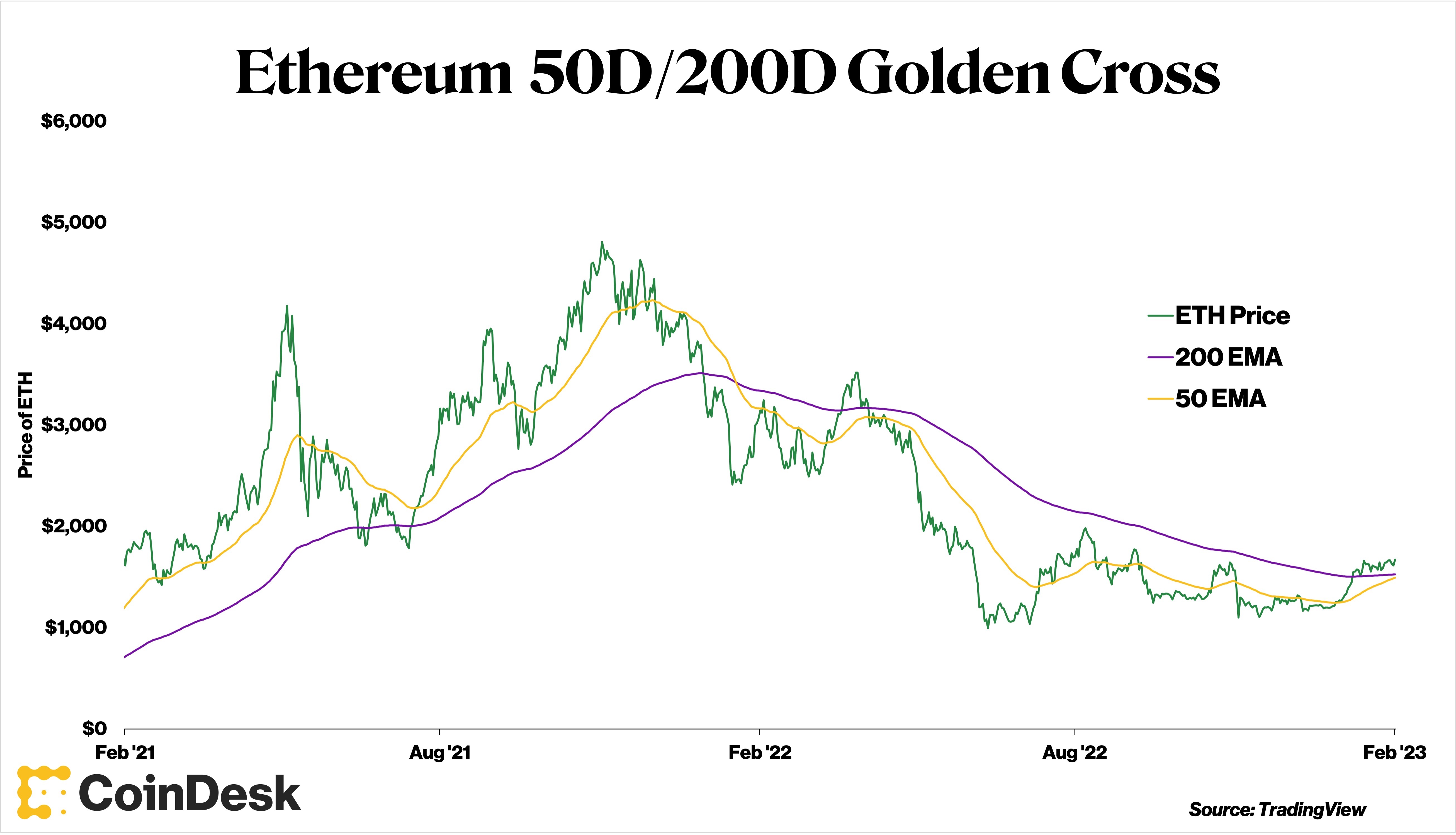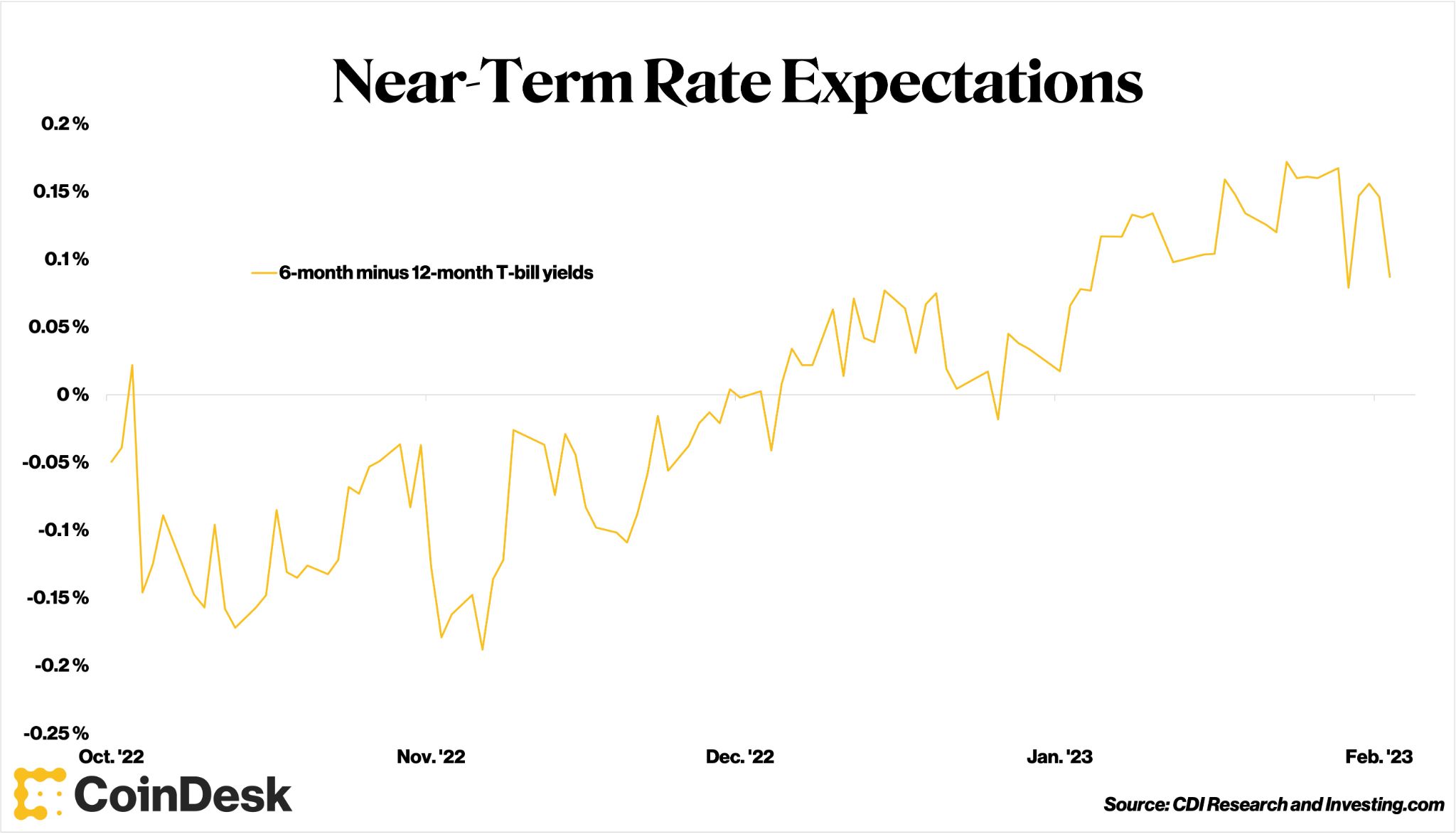Glenn Williams Jr. discusses this week’s hot topic in cryptocurrency: How traders should feel regarding bitcoin and ether potentially achieving a “golden Cross”, a popular indicator of technical analysis.
Next, Todd Groth (head of index research at CoinDesk Indices) discusses how bullish a wide variety of assets has become and where the Federal Reserve fits in.
– Nick Baker
Crypto Traders Will Find the ‘Golden Cross’ Important, But Is It Really?
Many crypto investors are excited as bitcoin (BTC), nears the coveted “golden cross”. This price-charting technique is used to chart the value of bitcoin (BTC). It occurs when a shorter-term investment has a higher probability of achieving a greater return. Moving average Crosses (often the 50 day) are often more common than a longer-term crossing (often times the 200-day).
This indicator is used frequently by technical analysts and is interpreted as a sign of a bull market that has just formed. Moving average crossovers are something I am very interested in as a technician. It is so thought-provoking. It places the moment in a larger-picture context, asking you the question, “What has happened to accelerate price movements and is that something I can expect to continue?”
It is a good forecasting tool, but how effective? It’s one thing for a crossover to be identified and to state “This is bullish.” But it’s quite another to determine if it has actually been.
When I look at the history of bitcoin, one thing that stands out is how rare a golden cross has been. Only six occasions have occurred since Jan. 1, 2015. Exponential moving average (EMA). exceeded the 200-day EMA. (Exponential moving estimates give more weight to recent prices, while simple moving averages equal weight all data points. It is up to you to decide which one you prefer. This is even rarer for Ethereum’s ETH which has only experienced three golden crosses in 2017.
Both ETH and BTC are very close to making it happen again. ETH is 2.4% away from the one, while ETH is 2.1%. It’s important to evaluate whether these assets are worth your attention or just something you can talk about. These are some interesting results.

BTC gained 4.4% over the following seven days, and surged 9.6% within 30 days. This was in addition to previous 50-day/200 day golden crosses. These returns can’t be viewed in isolation. What is the average BTC return over all periods of seven- and thirty days? It turns out that BTC is worse than just after gold crosses, which add 1.6% and 7.5% respectively. Historically, there has been an advantage when moving averages cross.
After a gold cross, BTC saw a 67% rise in April and May 2019, which was the best 30-day return. The 18.2% loss recorded in May 2018 and June 2018 was the worst.
Golden crosses are not a bullish indicator for ETH (the second largest cryptocurrency market cap after BTC). Average losses over the past seven days were 2% and 8% respectively. A buy-and hold strategy makes more sense than just getting long the asset based upon a moving average crossover. This statement is supported strongly by ETH’s average performance over all seven- and thirty-day periods: gains of 1.5% & 7.3%, respectively.

Surprisedly, I found that golden crosses are also quite rare in traditional asset classes. I took a look at three major U.S. stock indexes, the S&P 500 and Dow Jones Industrial Average, and found that they were all rarer than others. Since 2015, the S&P 500 has had three golden crosses. The other benchmarks have five. Each benchmark posted positive 30-day returns after the event. The Nasdaq was the leader with 1.5%, followed by the S&P 500 which returned 1.15% and Dow which rose 1.13%. None of these returns is worth being excited about, I would argue.
It is interesting to see that gains for all five assets (except ETH) were positive within 30 days of a golden cross. It makes sense to use the same process for a wider variety of cryptocurrencies to identify patterns if they exist.
Sincere disclosure is required, I struggle with the significance and relevance of the golden cross for cryptocurrency given the debates about correlation versus causation. The traditional 50-day/200 day moving average timeframe might be more applicable in traditional finance than it is in the new frontier of digital assets. That will only be determined by testing and time. Finally, I must question whether the rareness of crosses is a reason for additional attention or not. The truth lies somewhere in the middle. The overarching message is that no indicator should be considered in isolation.
Crypto Diversification is Back in 2023
Those not affected by the 2022 bloodbath seem to be very bullish and in love with it despite being paralyzed. Our broad benchmark for the cryptocurrency market, the CoinDesk Market Index is up 40% in 2023. Bitcoin (BTC), up 37% Even Solana’s SOL surged nearly 150% after it fell hard following the downfall of Sam Bankman-Fried, a supporter.

It’s not crypto only. Tesla (TSLA), shares have risen almost 100% over their lows a month ago. The shares of Tesla (TSLA) have risen almost 100% from their lows a month ago. This is despite the fact that Bed Bath & Beyond (BBBY), a meme-stock favourite, announced that it would be selling equity to raise funds. Ryan Cohen, a meme stock investor, is again making moves with Nordstrom (JWM), and Alibaba (BABA). Cathie Wood declares that her ARK Innovation ETF, ARKK (ARKK), is “the most important”. New Nasdaq“After rising 40% in January, while underperforming the Nasdaq 100 by almost 80% over a five year time horizon), What is the deal? ?
Markets feel like they have returned to a 2021-style optimistic mindset, due to the U.S. Federal Reserve slowing down the pace of interest rate hikes. This is evident in the U.S. yield curve’s front end. Look at the yield gap between 12-month Treasury bills and six-month Treasury bills. They are pricing in a Fed Rate cut in the third or four quarters of the year. (The longer-term yields have risen more than the shorter-term yields, which is why I made that observation.

Source: CDI Research Investing.com)
Last week’s Federal Open Market Committee meeting resulted only in a 25 basis-point rate increase. Traders took Chairman Jerome Powell’s fairly balanced comments to mean that the central bank would soon slow down its efforts at taming inflation via hikes. This will fuel the continuing buying spree on markets for everything and anything not bolted.
Jeffrey Gundlach, Doubleline Capital Chief Investment Officer and “bond king”, has pointed out that historically the Fed has set its policy rate on a lagged basis. This is because it has always followed the two-year Treasury yield. We can see that the leading indicator of future rate expectation is calling for rate cuts, as the two-year yield has crossed the effective federal funds rates. The real question is when and how quickly reductions will be made. How soon can we expect any reductions to occur?
We can see that the yield for two years was lower than the fed funds rate during the 2016-2019 and 2004-2008 rate-hiking cycles. These periods indicate higher rates for longer periods than the six-months priced into the market.

Inflation expectations (as derived using Treasurys including inflation-linked TIPSWhile they are now below their 2021-2022 peak levels, they are still higher than the average levels following the 2008 financial crisis. This is fantastic news, but you should take it with a grain. The Fed holds a substantial portion of TIPS market (estimated at 25% by 2022). Jim BiancoThis indicator may send a signal that is not as accurate. In addition to the unexpectedly strong employment report on Friday, there are still concerns about the effectiveness of the indicator. Phillips CurveYou have conditions of significant uncertainty, which could make it difficult for the Fed to delay cutting rates in order to reduce the risk of an error in policy.
We may be approaching the Fed’s peak squeeze on the economy, but we are not sure how long it will last. The economy has been resilient so far and is in good spirits. However, inflation is still a problem. The Fed does not seem to have the same level of economic intelligence as it did in the past. This is due to market distortions and the supply chain reverberations that were caused by the coronavirus epidemic. If the patient collapses suddenly, we can only hope that the Fed will quickly catch the economy.
– Todd Groth, CFAHead of index research at CoinDesk Indices
Takeaways
CoinDesk Nick BakerHere’s some news that is worth your attention:
-
NO DOLLARS The news that Binance had stopped accepting U.S. dollar withdrawals and deposits caused quite a stir. Although the crypto exchange did not specify why it was doing so, crypto businesses have struggled for years to keep ties with traditional banks. Regulators are reluctant to link crypto with the traditional financial system. Custodia, a crypto bank, was recently turned down by the Federal Reserve for membership in the Fed system.
-
NICE STAKE The Ethereum Merge in September brought a new era to the major crypto ecosystem. It switched from an energy-intensive proof of work (PoW), to a proof-of stake (PoS). However, there was one problem: While you can stake your Ethereum, you cannot currently unsteal it. Despite this being a positive test, it is likely that the deficiency will disappear soon.
-
POUND SAND The Bank of England is not happy with the hype surrounding the possible arrival of a “Britcoin”. It wants to make it clear that if it issues a digital Pound, it will not be like bitcoin or other cryptocurrency. Jon Cunliffe, Bank of England Deputy Governor, stated that “Indeed it is true.”
-
BOWLED OVER Crypto’s presence was evident in the Super Bowl last year. It was Larry David’s commercial for FTXPlus, you can find more information from other crypto companies. There will be no cryptocurrency ads in 2023. Associated Press Report. This is yet another sign of the damage to the industry’s image that FTX’s collapse has done.

